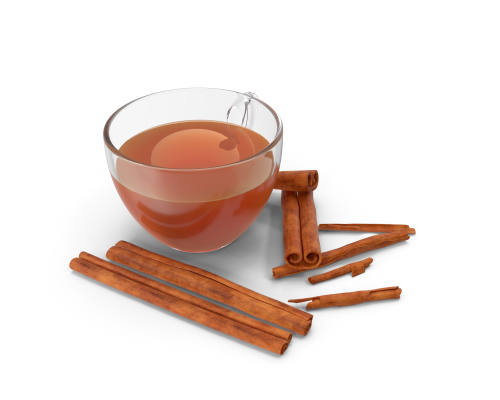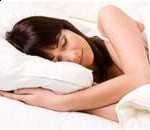

Study Shows Chinese Herbs Help Sleeplessness
 Asian countries commonly treat sleeplessness with Chinese herbs more affordably and without the side-effects associated with prescriptions. A study done in Taiwan showed patients complaining of insomnia were successfully treated with Chinese herbs.
Asian countries commonly treat sleeplessness with Chinese herbs more affordably and without the side-effects associated with prescriptions. A study done in Taiwan showed patients complaining of insomnia were successfully treated with Chinese herbs.
This study included 16,134 participants who received a total of 29,801 Chinese Herbal Medicine prescriptions. This large-scale study which used data assembled by the National Health Insurance of Taiwan, evaluated the frequency and patterns of Chinese herbs in treating insomnia.
What’s unusual about this study is not just the sheer numbers of participants but the amount of data collected. Read the full study here.
The reason the study has such a large group of participants is simply that Taiwan has instituted a unique computerized data entry system as part of its health care system. Patients can choose to visit either a Western hospital or a Traditional Chinese Medicine hospital. All data from patient visits are recorded in a national computer database. Because data is readily available in electronic form, large scale analysis is easy. Data in this study covers the course of one year. The numbers reflect the patients who, according to diagnostic codes for insomnia, were treated with Traditional Chinese Herbal Medicine in 2002.
Included in this data are the following:
- How many patients complained of insomnia, demographics on age, sex, etc?
- How many patients were prescribed various Chinese herb formula combinations in packets? (herbal packets are the preferred delivery method of Chinese herbs in Taiwan hospitals and clinics.)
- How many patients were prescribed single Chinese herbs in packets?
- Which Chinese herb formula was the most prescribed?
- Which individual herbs were often added to the prescribed Chinese herbal medicine formula?
Conclusion:
The data concluded the most common individual Chinese herbs prescribed for insomniawere Polygonum multiflorum used 23.8% of the time, followed by Ziziphus spinosa (18.3%) and Poria cocos (13.3%). Suan Zao Ren Tan was the most commonly prescribed formula. These are the same Chinese herbal ingredients found in iSleep Herb Pack.
_____________________________________________________________________________________________ PUBLISHED IN: EVIDENCE-BASED COMPLEMENTARY & ALTERNATIVE MEDICINE CAM Advance Access published online on April 1, 2009 eCAM, doi:10.1093/ecam/nep018 © 2009 The Author(s). This is an Open Access article distributed under the terms of the Creative Commons Attribution Non-Commercial License (http://creativecommons.org/licenses/by-nc/2.0/uk/) which permits unrestricted non-commercial use, distribution, and reproduction in any medium, provided the original work is properly cited. Prescriptions of Chinese Herbal Medicines for Insomnia in Taiwan during 2002 Fang-Pey Chen1,2, Maw-Shiou Jong1,2, Yu-Chun Chen2,3, Yen-Ying Kung1,2, Tzeng-Ji Chen2,3, Fun-Jou Chen4 and Shinn-Jang Hwang2,3 1Center for Traditional Medicine, Taipei Veterans General Hospital, 2National Yang-Ming University School of Medicine, Taipei, 3Department of Family Medicine, Taipei Veterans General Hospital and 4Graduate Institute of Integration Chinese and Western Medicine, Chinese Medical University, Taichung, Taiwan
Chinese herbal medicine (CHM) has been commonly used for treating insomnia in Asian countries for centuries. The aim of this study was to conduct a large-scale pharmaco-epidemiologic study and evaluate the frequency and patterns of CHM use in treating insomnia.
We obtained the traditional Chinese medicine (TCM) outpatient claims from the National Health Insurance in Taiwan for the year 2002. Patients with insomnia were identified from the diagnostic code of the International Classification of Disease among claimed visiting files.
Corresponding prescription files were analyzed, and an association rule was applied to evaluate the co-prescription of CHM. Results showed that there were 16 134 subjects who visited TCM clinics for insomnia in Taiwan during 2002 and received a total of 29 801 CHM prescriptions. Subjects between 40 and 49 years of age comprised the largest number of those treated (25.3%). In addition, female subjects used CHMs for insomnia more frequently than male subjects (female: male = 1.94:1). There was an average of 4.8 items prescribed in the form of either an individual Chinese herb or formula in a single CHM prescription for insomnia. Shou-wu-Teng (Polygonum multiflorum) was the most commonly prescribed single Chinese herb, while Suan-Zao-ren-tang was the most commonly prescribed Chinese herbal formula.
According to the association rule, the most commonly prescribed CHM drug combination was Suan-zao-ren-tang plus Long-dan-xie-gan-tang, while the most commonly prescribed triple-drug combination was Suan-Zao-ren-tang, Albizia julibrissin, and P. multiflorum.
For reprints and all correspondence: Prof. Shinn-Jang Hwang, Department of Family Medicine, Taipei Veterans General Hospital, No. 201, Sec. 2, Shih-Pai Road, Taipei 112, Taiwan, ROC. Tel: +886-2-287-57460; Fax: +886-2-287-37901; E-mail: sjhwang@vghtpe.gov.tw
______________________________________________________________________________________
National Institute of Health – PubMed study abstract on Suan Zao Ren Tang
J Biomed Sci. 2007 Mar;14(2):285-97. Epub 2006 Dec 7.
Gamma-aminobutyric acid (GABA) receptor mediates suanzaorentang, a traditional Chinese herb remedy, induced sleep alteration.
Yi PL, Tsai CH, Chen YC, Chang FC.
Department of Medical Technology, Jen-Teh Junior College of Medicine, Nursing and Management, Miaoli, Taiwan.
Abstract
The sedative-hypnotic medications, including benzodiazepines and non-benzodiazepines, are the most common treatments for insomnia. However, concerns regarding patterns of inappropriate use, dependence and adverse effects have led to caution in prescribing those sedative-hypnotic medications. On the other hand, a traditional Chinese herb remedy, suanzaorentang, has been efficiently and widely used in clinic for insomnia relief without severe side effects in Asia. Although suanzaorentang has been reported to improve sleep disruption in insomniac patients, its mechanism is still unclear. The present study was designed to elucidate the effects of oral administration of suanzaorentang on physiological sleep-wake architectures and its underlying mechanism in rats. We found that oral administration of suanzaorentang at the beginning of the dark onset dose-dependently increased non-rapid eye movement sleep (NREMS) during the dark period, but had no significant effect on rapid eye movement sleep (REMS). Our results also indicated that intracerebroventricular (ICV) administration of gamma-aminobutyric acid (GABA) receptor type A antagonist, bicuculline, significantly blocked suanzaorentang-induced enhancement in NREMS during the dark period, but GABA(B) receptor antagonist, 2-hydroxysaclofen had no effect. These results implicated that this traditional Chinese herb remedy, suanzaorentang increases spontaneous sleep activity and its effects may be mediated through the GABA(A) receptors, but not GABA(B) receptors.


